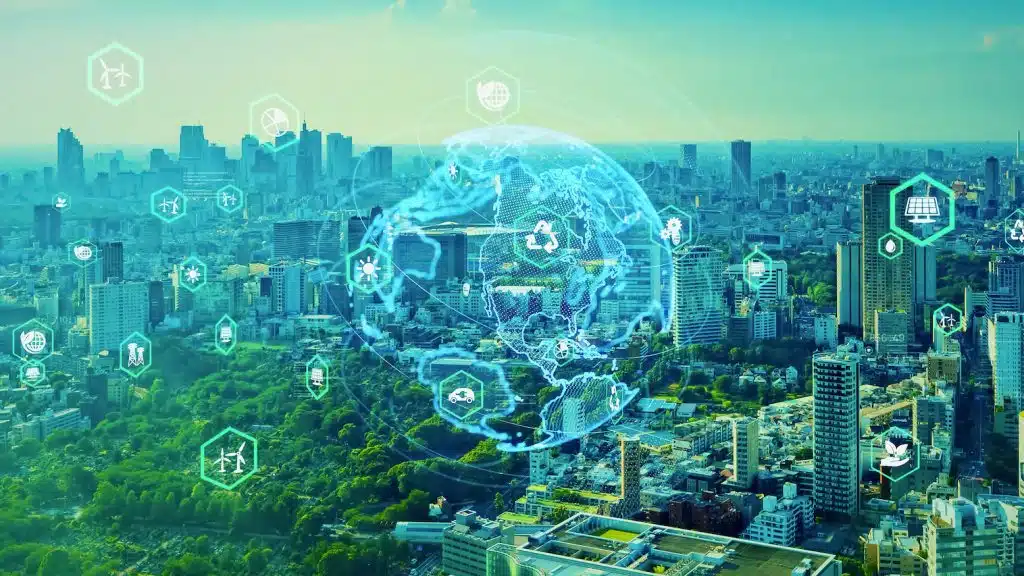Energy Resilience: A fundamental pillar to guarantee a reliable and continuous electricity supply.
April 28, 2025
Achieving this level of resilience requires strategic investments aimed at providing the system with greater flexibility, both in the temporal domain —the ability to adapt to fluctuations in demand or generation— and geographically, through the diversification and redundancy of its infrastructure.
The latest studies on electrical resilience agree on an approach based on three fundamental pillars: risk anticipation, the ability to respond to disruptive events, and the speed of system recovery. These elements allow for the design of more robust, adaptive networks that are prepared to face both frequent contingencies and exceptional situations.
A key element of this strategy is the implementation of continuous monitoring systems capable of detecting vulnerabilities in real time and activating early response mechanisms. Likewise, the electrical system must be prepared to face two categories of events: on one hand, the usual operational failures, which are often localized and of high frequency; and on the other, natural disasters, whose magnitude can simultaneously and severely compromise multiple components of the network, as occurs with earthquakes, fires, or floods.
In Chile, one of the countries most exposed to natural risks, these strategies must translate into concrete actions that strengthen both the centralized grid —through the expansion of transmission capacity, infrastructure digitalization, and the integration of renewable energies with storage systems— and the development of decentralized solutions. In this area, the implementation of local and autonomous microgrids stands out, capable of disconnecting from the main system and operating independently in the face of low-frequency but high-impact events, thus ensuring the continuity of supply in critical or isolated territories.
What are the benefits of energy resilience and the key goals?
Energy resilience is a fundamental pillar to ensure a reliable and continuous electricity supply, especially in a context of growing dependence on electricity and an increase in extreme climate events. In this sense, we must consider what could happen if we lacked a resilient electrical network. Climate change is already causing more extreme weather events, which in turn are generating large-scale, long-lasting power outages. An example of this is the Texas energy crisis in February 2021, where the system’s lack of flexibility not only led to economic losses but also to shortages of water and food and deaths from hypothermia.
By investing in resilience, the system will be able to anticipate, withstand, and recover quickly from interruptions —whether caused by technical failures, human errors, or natural disasters— offering high-impact strategic benefits for the country. These include the continuity of essential services such as hospitals, telecommunications, and logistics centers, and the reduction of economic losses from prolonged outages.
From an economic and social perspective, strengthening energy resilience protects key productive sectors, reduces costs associated with emergency repairs, and ensures a more efficient response to crises. It also increases public trust in the institutions responsible for supply management.
Regarding the highlighted goals, it is essential to move towards higher service standards that recognize the critical role of electricity in modern life. This involves incorporating resilient technologies such as smart grids, storage systems, advanced monitoring, and active demand management. Likewise, it is key to foster consumer participation, promote distributed generation, and deploy local microgrids that provide autonomy and flexibility, especially in remote or strategic areas.
Furthermore, it is necessary to recognize how microgrids will protect us during natural disasters by maintaining supply for critical services during the emergencies triggered by these events. In short, energy resilience is not just a technical issue: it is an investment in sustainable development, social well-being, and energy sovereignty.
What are the challenges in reinforcing existing infrastructure sustainably to guarantee reliable system operation?
Reinforcing the existing energy infrastructure sustainably involves addressing multiple challenges.
One of the main challenges is identifying and mitigating vulnerabilities, both physical (aging or poorly designed infrastructure) and in software within communication, management, and control systems (such as cyberattacks on SCADA systems and control networks). System operation recovery must include plans for deploying repairs, bringing backup generation online, and locally restoring supply to key services.
Additionally, there are inherent complexities in integrating variable renewable energies such as solar and wind, which demand smarter grid management systems and large-scale short-, medium-, and long-term storage capacities. Modernizing and strengthening transmission networks, incorporating automated management and control technologies, and training qualified human capital are essential to guarantee continuous and reliable operation.
The measures we adopt must include an evaluation of the social component. The extension and reinforcement of the network must be carried out while safeguarding local ecosystems.
Moreover, implementing international standards, such as those established by the IEC for the resilience of electrical systems, helps strengthen system robustness against extreme events.
According to your experience, how should resilience and reliability performance be measured?
Measuring resilience and reliability performance is a key aspect; however, there is still no unified global standard.
Some metrics combine qualitative attributes —such as adaptability, robustness, and self-sufficiency— with quantitative performance indicators. These include the recovery index (energy restored after an interruption), the average outage duration, and the economic efficiency of the restoration process.
At a more local level, new indicators are needed to assess the ability of localities to operate in island mode. This indicator is crucial to promote the incorporation of microgrids and distributed systems, as their value lies not only in lowering costs by managing demand but also in reducing the risks incurred by lacking energy during emergencies.
Another important aspect is that there are areas where not only telephone services but also water distribution systems —such as those in Copiapó, Vallenar, and Caldera— depend on electrical supply. Whether these services have backup systems allowing them to operate during major electrical system failures should be captured by a geographic resilience index.
Additionally, more sophisticated metrics have been proposed that integrate social and economic factors, such as the impact on quality of life or the recovery capacity of vulnerable communities.
In this context, Chile has the opportunity to lead an energy resilience model based on technological innovation, territorial sustainability, and environmental responsibility.

